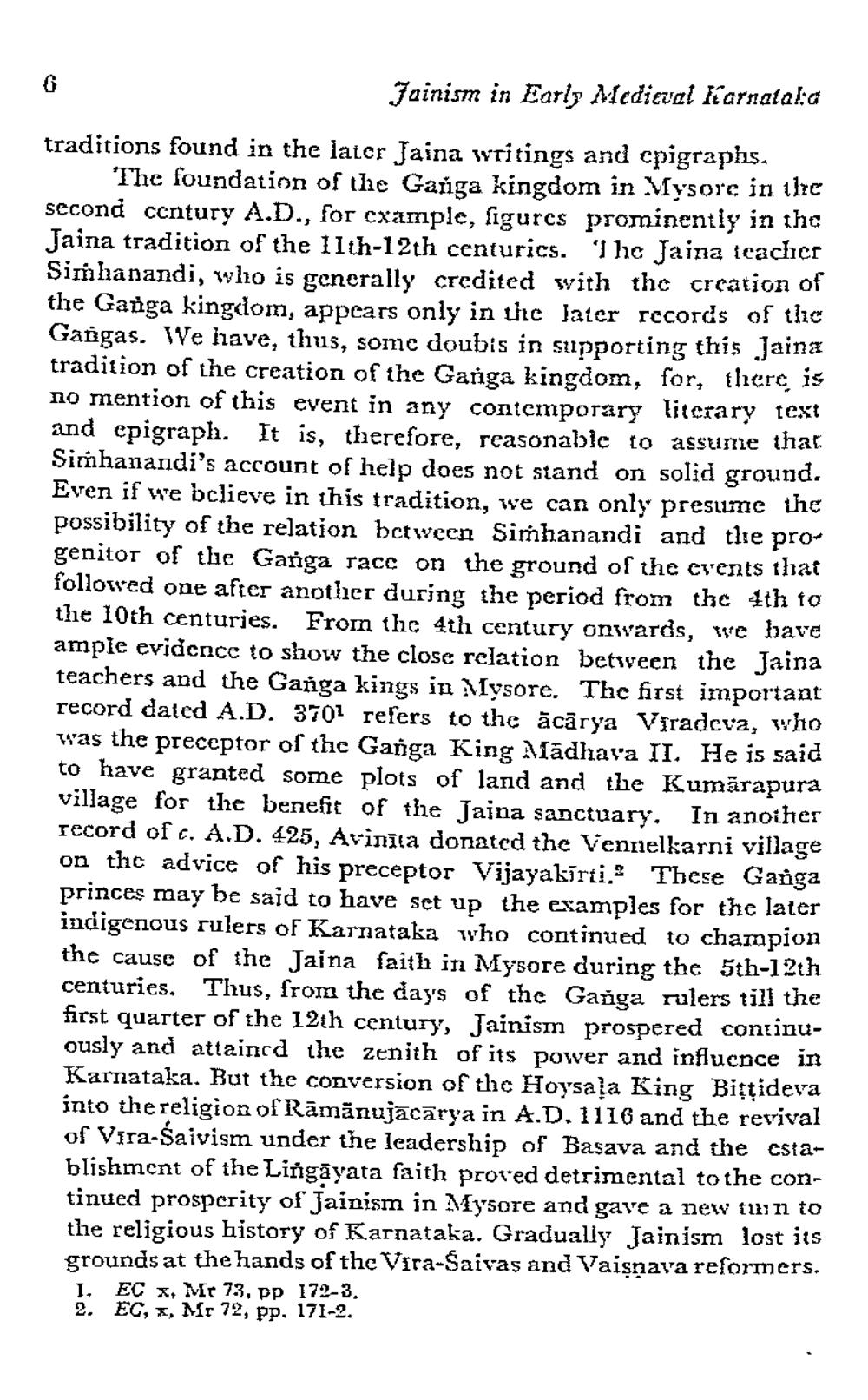________________
Jainism in Early Medieval líarnataka
traditions found in the later Jaina writings and cpigraphs.
The foundation of the Ganga kingdom in Mysore in ihre second century A.D., for example, sigurcs prominently in the Jaina tradition of the 11th-12th centurics. 'I hc Jaina (cacher Simhanandi, who is generally credited with the creation of the Garga kingdom, appears only in the later records of thic Gangas. We have, thus, somc doubis in supporting this Jaina tradition of the creation of the Ganga kingdom, for, there is no mention of this event in any contemporary litcrary text and epigraph. It is, therefore, reasonable to assume that Simhanandi's account of help does not stand on solid ground. Even if we bclieve in this tradition, we can only presume the possibility of the relation between Simhanandi and the progenitor of the Ganga race on the ground of the events that followed one after another during the period from the 4th to the 10th centuries. From the 4th century onwards, we have ampie evidence to show the close relation between the Jaina teachers and the Ganga kings in Mysore. The first important record daled A.D. 3701 refers to the acārya Viradeva, who was the preceptor of the Ganga King Alādhava II. He is said to have granted some plots of land and the Kumārapura village for the benefit of the Jaina sanctuary. In anoiher record of c. A.D. 425, Avinīla donated the Vennelkarni village on thc advice of his preceptor Vijayakīrti. These Ganga princes may be said to have set up the examples for the later indigenous rulers of Karnataka who continued to champion the causc of the Jaina faith in Mysore during the 5th-12th centuries. Thus, from the days of the Ganga rulers till the first quarter of the 12th century, Jainism prospered continuously and attaincd the zenith of its power and influcnce in Karnataka. But the conversion of the Hoysala King Birtideva into the religion of Rāmānujācārya in A.D. 1116 and the revival of Vira-Saivism under the leadership of Basava and the establishment of the Lingāyata faith proved detrimental to the continued prosperity of Jainism in Mysore and gave a new tuin to the religious history of Karnataka. Gradually Jainism lost its grounds at the hands of the Vira-Saivaş and Vaisnava reformers. 1. EC x, Mr 73, pp 172-3. 2. EC, , Mir 72, pp. 171-2.




